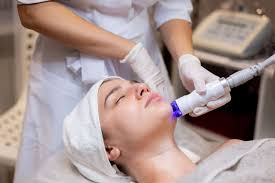The Q-Switched Nd:YAG laser is a widely recognized technology in dermatology and aesthetic treatments. It is known for its precision, safety, and effectiveness in addressing various skin concerns, making it a popular choice for individuals seeking advanced skin rejuvenation solutions.
Understanding the Q-Switched Nd:YAG Laser
The Q-Switched Nd:YAG laser operates by emitting high-energy light pulses in extremely short durations. This unique mechanism enables it to break down pigmentation, stimulate collagen production, and enhance skin clarity without causing extensive damage to surrounding tissues. The laser works at different wavelengths, typically 1064 nm and 532 nm, allowing it to target various skin conditions effectively.
How It Works
The technology behind the Q-Switched Nd:YAG laser involves a photomechanical effect that shatters pigmented particles or ink while preserving healthy skin. The longer wavelength (1064 nm) penetrates deeper layers of the skin, making it suitable for treating dermal pigmentation and tattoos, while the shorter wavelength (532 nm) is effective for addressing superficial pigmentation and vascular lesions.
Applications of Q-Switched Nd:YAG Laser
This laser technology is versatile and is commonly used for a wide range of dermatological and aesthetic treatments, including:
1. Tattoo Removal
One of the most popular uses of the Q-Switched Nd:YAG laser is tattoo removal. The laser targets the ink particles embedded in the skin, breaking them into smaller fragments that the body naturally eliminates over time. It is effective for various ink colors, though multiple sessions are often required for optimal results.
2. Pigmentation Treatment
Hyperpigmentation, melasma, sunspots, and age spots can be effectively treated using this laser. By targeting excess melanin, the Q-Switched Nd:YAG laser reduces pigmentation, resulting in a more even skin tone.
3. Skin Rejuvenation
The laser stimulates collagen production, improving skin elasticity and reducing the appearance of fine lines and wrinkles. It is particularly beneficial for individuals looking for non-invasive anti-aging solutions.
4. Acne Scar Reduction
Post-inflammatory hyperpigmentation and acne scars can be significantly improved using this laser treatment. By promoting cellular renewal, the skin appears smoother and more refined over time.
5. Vascular Lesions Treatment
The laser is effective in treating vascular lesions such as spider veins and broken capillaries. The 532 nm wavelength specifically targets red and vascular pigmentations, diminishing their appearance.
Advantages of Q-Switched Nd:YAG Laser
1. Non-Invasive and Minimal Downtime
Unlike surgical treatments, this laser is a non-invasive option that requires little to no downtime. Most patients resume their daily activities shortly after the session.
2. Safe for Various Skin Types
With its adjustable wavelengths, the Q-Switched Nd:YAG laser is safe for different skin tones, making it suitable for individuals with darker complexions who may be prone to post-inflammatory hyperpigmentation.
3. Precise and Controlled Treatment
The laser’s advanced technology allows for precise targeting of specific skin concerns without affecting surrounding healthy tissue, reducing the risk of side effects.
4. Quick and Effective
Each session lasts between 15 to 30 minutes, and results become noticeable after a few treatments. Depending on the concern being treated, multiple sessions may be required for optimal outcomes.
What to Expect During and After Treatment
Pre-Treatment Preparation
Before undergoing the Q-Switched Nd:YAG laser procedure, patients should avoid sun exposure, tanning beds, and certain skincare products that may increase skin sensitivity.
During the Procedure
A trained dermatologist or skincare professional will apply a cooling gel or numbing cream if necessary. The laser device is then used to deliver pulses of light to the targeted area. Some individuals may experience mild discomfort, but it is generally well-tolerated.
Post-Treatment Care
After the session, the skin may appear slightly red or swollen, which subsides within a few hours to days. Patients are advised to apply sunscreen, avoid harsh skincare products, and follow the aftercare instructions provided by their specialist to ensure proper healing.
Potential Side Effects and Risks
While the Q-Switched Nd:YAG laser is considered safe, some individuals may experience temporary side effects such as:
- Mild redness or swelling
- Temporary darkening of treated pigmentation
- Slight peeling or crusting
Serious complications are rare when the procedure is performed by a qualified professional.
Who Can Benefit from Q-Switched Nd:YAG Laser?
This treatment is suitable for individuals seeking solutions for:
- Unwanted tattoos
- Hyperpigmentation and melasma
- Acne scars
- Fine lines and skin laxity
- Vascular lesions
However, individuals with active infections, certain skin conditions, or those who are pregnant should consult a dermatologist before proceeding with the treatment.
Conclusion
The Q-Switched Nd:YAG laser is a cutting-edge technology offering safe, effective, and versatile solutions for various skin concerns. Whether used for pigmentation correction, tattoo removal, or overall skin rejuvenation, it provides remarkable results with minimal downtime. Consulting with a qualified skincare professional can help determine if this treatment is the right choice for individual skin needs.



